Growing up a teenager in the early 80’s, I watched the rise of the 8-bit home computers. I could not afford an Apple II or a Commodore 64, so I stuck with coin-ups for a while. Eventually, sometime in 1986, I purchased an Atari 520ST. The ST was commonly seen as the poor man’s Macintosh, but it was actually an inexpensive next generation gaming computer, thanks to a large selection of games during its prime years.
Join the Patrol, and see the Galaxy!
Mike and Muffy Berlyn’s incredibly surreal Tass Times in Tonetown was one of the very first adventure games I played, back in 1986. I always had a soft spot for campy adventure games, primarily Infocom’s text adventures like Steve Meretzky’s Planetfall and Leather Goddesses of Phobos, as well as Douglas Adams’ Hitchhiker’s Guide to the Galaxy and Bureaucracy, but also titles from London-based Magnetic Scrolls, such as The Pawn, The Guild of Thieves and Jinxter.
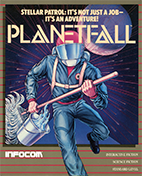
Sierra’s Mark Crowe and Scott Murphy’s Space Quest series and Leisure Suit Larry in the Land of the Lounge Lizards were two of my favorites. Back in those days and with no search engines in sight, adventure games could sometimes be quite challenging, but then again every new puzzle solved was like a little victory.
Prepare to Race
In 1986, Atari released a port of its overhead single-screen arcade racer Super Sprint for the ST. The game combined simple and accessible controls with a well-balanced difficulty curve. The best feature of Super Sprint was in my opinion that three friends could compete simultaneously, along with one AI driver on the same computer. We would chase each other’s tiny blue, yellow or red F1 cars in a succession of fun short three-lap races, on one of eight tracks. Each new race added new obstacles, hazards, golden spanners to collect for future vehicle upgrades and a smarter computer-controlled opponent.
Faster Than Light
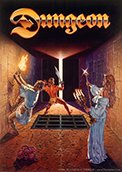
In 1987 a tiny San Diego studio named FTL Games published Dungeon Master, a game that would represent an undeniable defining moment in the evolution of the computer role-playing game (CRPG) genre, a true glimpse into the future.
The game went on to win countless awards and eventually became the Atari ST’s best selling title of all time.
Dungeon Master was incredibly addictive and in many ways ground-breaking: it was the first dungeon crawler to offer first-person multi-character real-time gameplay with simulated three-dimension visuals, an intuitive fully mouse-based control scheme and an original symbol-combining magic system.
Many role-playing games built on the innovative features that FTL’s game originated. I played technically and visually superior titles such as SSI’s Eye of the Beholder series and Origin Systems’ Ultima Underworld, but none of these newer games brought out the same emotions of amazement and astonishment as the original Dungeon Master.
Guru Meditations

On a sunny summer day of 1988, in a small computer store in Paris, I came across a new sci-fi action game by Liverpool-based Psygnosis, called Obliterator. A demo of the game was running on both an Atari ST and a brand new computer, the Commodore Amiga 500.
The rivalry between the two platforms had already been established since 1985, nevertheless Commodore machine’s superiority wasn’t made obvious to me, up until I saw Obliterator.
The Amiga simply outclassed the ST in every area: the visuals were always more colorful, the animations smoother and the sounds richer. It actually handled graphics, sound, and video better than any computer of that era. The Amiga was easily a decade ahead of its time!
A few weeks later I sold my Atari 520 ST and bought a brand new Amiga 500. I became and remained a diehard Amiga fan ever since, owned every model released, played every game and even wrote a few shareware of my own for it.
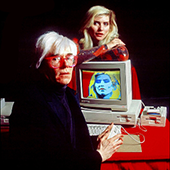
Presented in Thrill-o-vision!
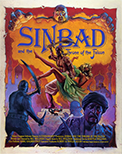
One of my all-time favorite developers of the 80’s was Cinemaware. From 1986 to 1990, they released a series of very popular action-adventure games rooted in classic movie genres. I think Cinemaware were in fact the true pioneers of cinematic gaming.
Defender of the Crown (1986) was an homage to classic Douglas Fairbanks and Errol Flynn swashbuckler films. The King of Chicago (1986) was inspired by James Cagney and the crime films of the 1930’s. Rocket Ranger (1988) was a 1950’s Sci-Fi movie-style game about a Nazi-fighting jetpack-wearing hero. It Came from the Desert (1989) paid tribute to 1950’s monster movies.
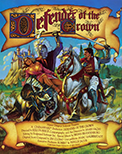
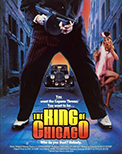
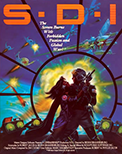
Each Cinemaware game featured larger than life characters presented with extraordinary graphics and amazing musical scores, along with advanced film and television storytelling techniques that have become the norm in blockbuster game productions ever since.
HuC6280
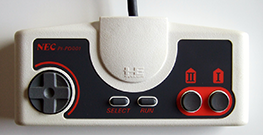
My gaming was not limited to the ST or the Amiga. I remember many sleepless nights spent swapping HuCards in a PC Engine to boot up and play some mind-blowing games like Legend of Hero Tonma, Alien Crush and Devil’s Crush, R-Type, Bomberman ’94, PC-Kid, Galaga ’88 or Parasol Stars.
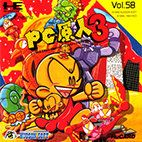
I always thought that Hudson Soft designed the PC Engine with a certain elegance that other game consoles of the same generation lacked. The 16-bit graphics chip, the faster CPU, the 6-channel audio chip and the slick HuCard cartridges technically eclipsed Nintendo’s Famicom and Sega’s Master System.
Later in 1990 I purchased a battery-hogging yet amazing PC Engine GT, undeniably the most advanced handheld of its time and one of my favorites.
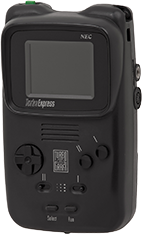
スーパーファミコン

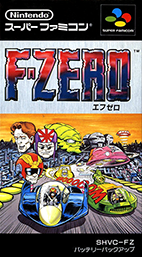
On November 21, 1990, Nintendo of Japan released the Super Famicom, the successor to the extremely popular Famicom. Nintendo’s entry in the infamous 16-bit console war offered enhanced graphics, superior sound and a brand new controller.
The Super Famicom was the first in a long line of game consoles that I imported from Japan. The console and its only two launch titles (Super Mario World and F-Zero) cost me an arm and a leg but they were all worth it.
The Super Famicom was probably the greatest console I have ever owned, thanks to the many classic games that were published for it during an extensive thirteen-year lifespan: The Legend of Zelda: A Link to the Past, Super Mario Kart, Mega Man X, Star Fox, Super Metroid, Final Fantasy VI, Donkey Kong Country, Chrono Trigger and Super Mario World 2: Yoshi’s Island.
The 16-bit era represented an essential part of my computer and console gaming culture. The games I played between the mid-1980’s and the early 1990’s nurtured my perception of interactivity and defined my creative sensibilities, not only as a gamer but more importantly as a future video game creator.
